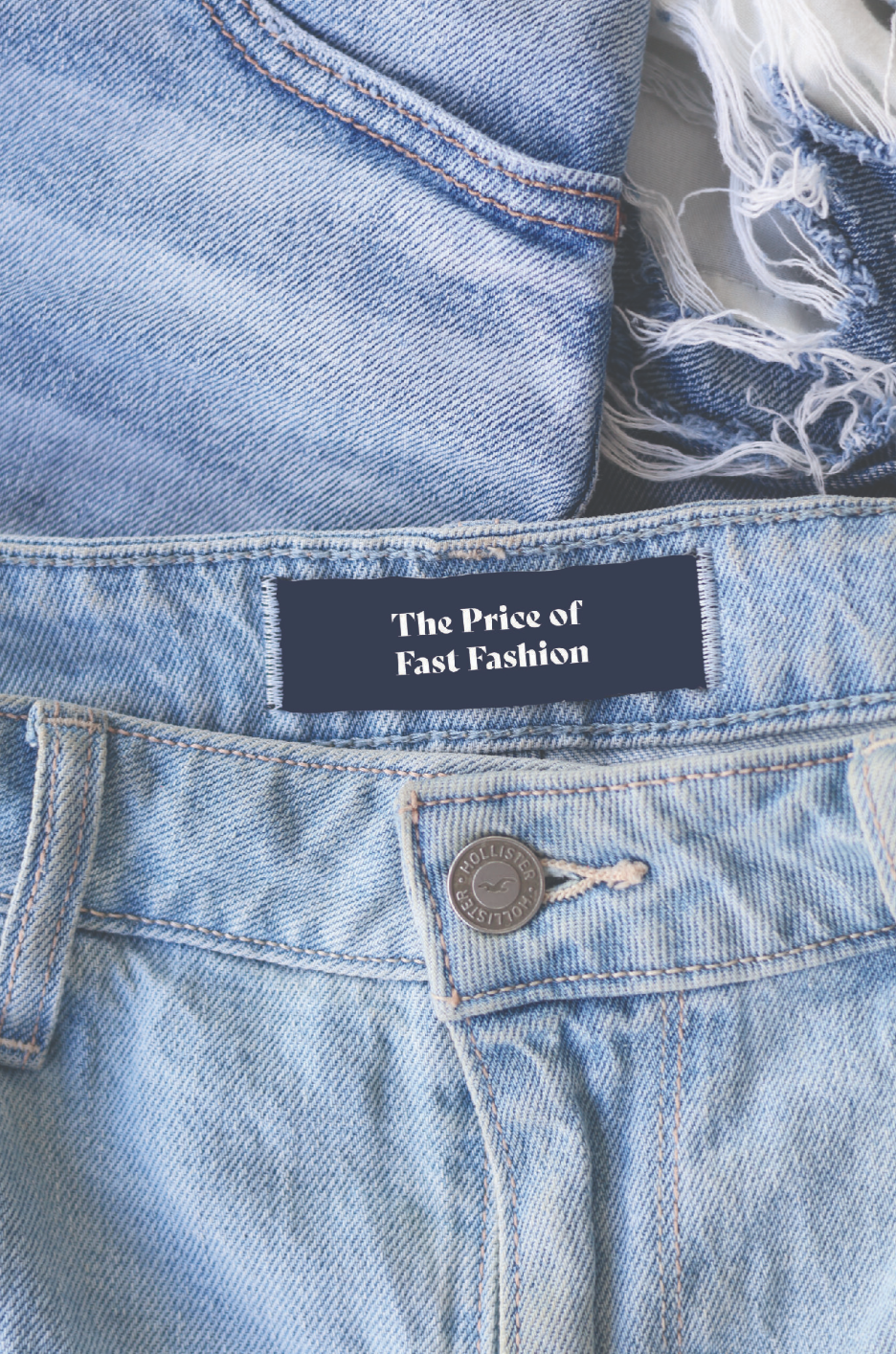The fast fashion business model started in the 1970s but took hold in the 1990s through companies such as Forever21 and ZARA.
Inspired by ZARA’s goal of having a 15-day timeline for a piece of clothing to go from design to store, the “New York Times” coined the phrase “fast fashion,” and it stuck.
More recently, companies like SHEIN have taken control of the fast fashion industry, propelled by its exclusively online business model and ability to produce cheap clothes very quickly. Influencers and social media have helped popularize these stores by starting microtrends, where every other week there is a new piece of clothing or accessory all over users’ feeds.
According to studies from Statista, nearly 70% of fast fashion brands push their clothing through sponsorships on social media. The company SHEIN is currently the face of fast fashion.
Balancing Budgets vs. Beliefs: Hockaday Students’ Perspectives on Fast Fashion
Despite understanding the problems with fast fashion, many Hockaday students still utilize brands such as SHEIN, Edikted, ZARA and Brandy Melville, due to their cost effective and trendy appeal.
“I have to use my own money to buy clothes,” junior Louella Jacobsen said. “And since I don’t have a lot of disposable income, I like to buy from fast fashion brands to save money.”
She estimates that 70% of her wardrobe comes from fast fashion stores, especially swimwear, which she buys almost exclusively from SHEIN.
“I think social media really helps perpetuate fast fashion,” Jacobsen said. “Trends change fast on TikTok. SHEIN and other fast fashion brands can keep up better and make clothing that’s more up to date.”
However, a study by Vestiaire Collective determined that the “cost-per-wear metric” for fast fashion brands is much higher than that for other companies. This means that consumers typically wear fast fashion clothing for a much shorter period of time than slow fashion brands.
“The quality of clothes from Edikted or SHEIN is a lot worse than other stores,” Jacobsen said. “I can really only wear swimsuits from those brands for one season.”
Some students, however, are working towards a solution to cut into the fast fashion market sector while still providing affordable and fashionable alternatives.
Sophomores Cecilia Chen and Margaret Hohenshelt love fashion, but felt discouraged when they were shopping and noticed the amount of fast fashion brands out there. To take action, they teamed up and started Sloane the Brand, a clothing company. They design, manufacture and sell tops that are meant to last longer than fast-fashion shirts.
With help from Laura Day, Director of Innovation and Collaboration, and the Social Impact Program, the sophomores launched their website (sloanethebrand.org) and social media page (@sloanethegram). Day also helped them find manufacturing contacts that use sustainable, environmentally friendly and ethical resources. A large portion of the company’s profits are donated to Fashion Revolution, a non-profit organization working to fight fast fashion and support alternative brands.
Chen and Hohenshelt recognized the paradoxical nature of both carrying trendy clothing and eliminating unethical labor practices.
“We believe in timeless fashion,” Chen said. “We’re really hoping to create a business in the future that is essentially a sustainable Brandy Melville.”
To reduce environmental damage, they use a blend of biodegradable cotton and recycled polyester to strengthen the fabric. To combat the ethical problems in clothing manufacturing, they did significant due diligence in finding a company that paid fair wages and provided healthy working conditions for employees.
Currently, they sell their clothing on their website, the Hockaday bookstore and other retailers around Dallas.
“Fast fashion, in the long term, does so much more harm than it does good,” Hohenshelt said. “We want to make fashionable clothing that follows ethics and morals, while also preserving the environment.”
Quantity over Quality: How Fast Fashion companies work
The true appeal of fast fashion lies in its ability to be on trend at a low cost. This is the business model of these companies.
These companies look at current high-end styles and quickly produce a surplus of products, hoping the clothes they create will be popular with customers. Quality is sacrificed as companies choose cheaper and less sustainable materials to keep the production costs down. This often results in products that can only be worn once and are more likely to be thrown away than worn again.
Companies can quickly respond to market demand for their products. They can restock popular inventory quickly.
Many of these companies produce collections in a matter of weeks, or even days. Keeping the design to production stage as short as possible keeps their consumer appeal alive. The speed of their design and production improves profit.
To keep the cost of their clothing cheap, fast fashion companies often take advantage of the cheaper labor costs and less regulations in developing countries. Many brands avoid dealing directly with the supply chain as much as possible to avoid legal liability for manufacturing accidents.
Past issues have included buildings that have collapsed due to structural issues, killing and injuring many of the people inside. The workers are paid very little, even though they deal with dangerous working conditions and work for very long hours.
Beneath the Bargain: Fast Fashion’s Environmental Impact
While fast fashion is financially affordable, its environmental cost is significant in its use of water and production of waste and microplastics.
Cotton is the most widely used natural material in the fast fashion industry, which takes a significant toll in the ongoing water crisis. According to a study by George Washington University, a fast fashion brand normally uses 700 gallons of water to produce a single shirt made from cotton.
Additionally, the same study found that dyeing and finishing textiles is responsible for over 20 percent of global industrial water pollution.
The fast fashion industry also generates 97 million tons of waste annually, according to the Royal Waste Service. Recycling efforts do little to ameliorate the problem.
“Right now, only around 12 percent of fast fashion garments are recycled globally,” Melissa Allan, Hockaday’s Fashion vs. Fiction class teacher, said. “And of that 12 percent, only one percent of those clothes are reused and made into new clothes.”
Fast fashion not only impacts the greater environment, but also the consumers and communities who wear them. According to a study by the University of Galway, almost 70 percent of fast fashion clothing is made from synthetics like acrylic, nylon and polyester.
“There have even been articles out about how the chemicals in some athletic wear heat up as you sweat and exercise, and the microplastics enter your bloodstream,” Allan said.
Students in Allan’s class learn about these environmental effects, where they spend the social impact portion of class discussing how to reduce the use of fast fashion and wasteful fashion.
They read “Overdressed” by Elizabeth L. Cline to learn about the fast fashion industry and are encouraged to research more modern statistics about its impact.
“The book was published in 2012, so some of the research statistics surrounding fast fashion are dated now,” Allan said. “But when students look up newer statistics on the environmental impact of fast fashion, they find that they’ve only gotten worse for the most part.”
Each year, students hold a competition where groups pitch ways to increase fashion sustainability at Hockaday.
After a winner is chosen by Mrs. Day and other teachers and faculty, the winning group implements their plan.
Last year, they held a clothing swap event where seniors sold their old college merchandise, club and sports apparel to other students for a discounted price.
“I think this is a great way for Hockaday students to help reduce their fashion environmental footprint until they can do things on a larger scale,” Allan said.








